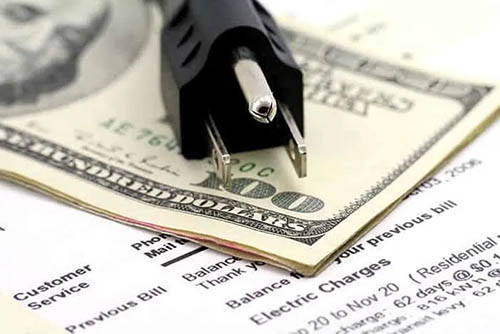Higher Electric Rates Possible!
 In May, the Federal Energy Regulatory Commission (FERC) issued a landmark rule related to regional electric transmission.
In May, the Federal Energy Regulatory Commission (FERC) issued a landmark rule related to regional electric transmission.
FERC is the independent Federal agency that regulates most hydropower dam licenses and the wholesale rates and delivery contracts for the interstate transmission of electricity.
Traditionally, cost allocation for interstate transmission projects was relatively straightforward. The state that benefitted the most from the transmission paid for it.
This new transmission planning and cost allocation rule, Order No. 1920, requires transmission planners to consider multiple forward-looking benefits over at least twenty years when they develop their plans. The vague “benefit” definition is geared towards connecting wind and solar facilities to the power grid.
FERC approved Order No. 1920 by a 2-1 vote.
The dissenting vote came from Commissioner Mark Christie.
I have known Commissioner Christie for many years from my service in the Virginia House of Delegates. He was an advisor to a governor and then two speakers of the Virginia House. Subsequently, the legislature elected him to serve on the Virginia State Corporation Commission, a state agency responsible for regulating public utilities, insurance, state-chartered financial institutions, securities, retail franchising, and railroads.
Now a Senate-confirmed member of FERC, Commissioner Christie penned a seventy-seven-page dissent explaining his “no” vote.
“This is not about promoting reliability. This rule is a shell game designed to disguise its true agenda, which is about the money. It’s a 1,300-page vehicle to socialize the trillion‐dollar cost of the rule’s sweeping policy agenda.”
“The final rule clearly intends to socialize trillions of dollars of costs for the transmission necessary to pursue this transformational agenda…the final rule removes the principle that the states must consent to how and whether these massive costs are imposed on their consumers.”
The final rule then requires transmission providers “to socialize the costs of these projects across the entire region, even when states in a region have never consented for their consumers to bear the costs of such projects.”
The concern here is that consumers will bear the costs of these renewable energy projects, even if a state’s ratepayers do not consent.
For example, states with lofty climate goals, such as California and New York, rely on the development of wind and solar farms to generate power.
However, these states face constraints in building capacity. Therefore, they turn to other states to generate clean power, and wheel that energy back home.
For this to work, other states would have to build new power lines and necessary infrastructure.
Accordingly, the energy created at these new facilities would be at the expense of the ratepayers of the other states. In other words, that could be you! You could be paying money to create energy in Virginia that only benefits New York.
Monitoring Analytics of PJM Interconnection finds that transmission now constitutes almost one-third of wholesale power costs, with the cost of transmission service exceeding the cost of capacity for the first time in 2020.
As if American households were not already being squeezed by high power bills!
Solar and wind projects like these are potentially making their way to Virginia’s Ninth District.
According to an article by the Washington Post, for the United States to achieve net-zero carbon emissions by 2050, one potential option would require over 260,000 square miles of land designated to wind and solar farms.
That is twenty-five times the size of Virginia’s Ninth Congressional District!
Among the conflicts that arise from the development of solar and wind farms is environmental disruption. Land conflicts can disrupt landscapes, inhibit productive farmland and harm animals. For example, a 2013 Biological Conservation study on the estimates of bird collision mortality at wind facilities in the contiguous United States found an approximate average of over 200,000 bird fatalities per year.
While Order No. 1920 is a poor rule, I believe something must be done to address regional electric transmission.
Given projections of rising energy demand, we will not be able to use existing power lines to take energy from a facility in one region and move it to another without additional high-capacity lines. While there is broad agreement that the one-hundred-year-old sections of the grid need to be replaced, permitting streamlined, and more regional power lines constructed, making Ohio consumers pay for a line just because Pennsylvania wants Iowa’s wind power makes absolutely no sense.
This rule, coupled with the Biden administration’s egregious regulations on fossil fuels, including coal, will further drive up electricity costs. These additional costs make it hard on American families to make ends meet.
If you have questions, concerns, or comments, feel free to contact my office. You can call my Abingdon office at 276-525-1405 or my Christiansburg office at 540-381-5671. To reach my office via email, please visit my website at https://morgangriffith.house.gov.









